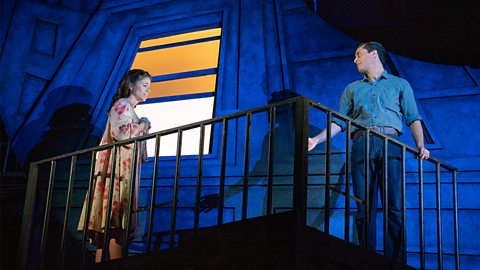The purpose of lighting design
Illuminating action on stage
One of the most important functions of lighting design is illuminating the action on stage. Lighting is needed so that the audience can see clearly what is happening.
Conveying setting and time of day
Lighting can be used to help show the audience where the production is set. For example, a play set in a hot country may use warm, orange lighting to demonstrate that the climate is hot. Lighting can also show different times of the day. For example, bright lights can create the effect of a hot summer’s day, while lower light levels may indicate night.

Creating mood and atmosphere
Lighting can help to create mood and atmosphere on stage. For example, to create a cold, damp jail cell, a lighting designer might use a cool, blue light with a low intensity.
Focusing the audience’s attention
Lighting design is particularly effective in focusing the audience’s attention. By lighting different areas of the stage, a lighting designer is able to guide the audience’s eye.
Influencing pace
Lighting can also be used to influence the pace of a piece of theatre. Lots of quick lighting cues can provide an exciting, dynamic energy to a performance, while slow fades can create a more calming effect.
Communicating themes or symbols
In some productions, lighting can be used to communicate themeCentral, unifying idea(s) that run through a text. or provide a symbolicA symbol can represent an abstract idea, eg the colour red representing romance or a dove representing peace. dimension to a performance. For example, the colour red might be used to represent love or romance.
Supporting the style of the production
Lighting can support the styleHow theatrical ideas are presented on stage. of a production. Plays in a naturalisticA form of theatre designed to create the illusion of reality for an audience. Originated in the late 19th century. style often use lighting to create the illusion of real life, while non-naturalistic performances often use more theatrical lighting effects.